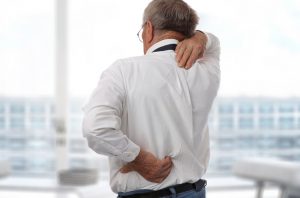
This research stemmed from earlier findings that many of these patients are not being treated properly or are not taking their medication as prescribed. The researchers claim that many people remain unaware that osteoporosis leads to an increased risk of bone fracture, which at an elderly age can be fatal.
“I think many people are shocked to learn that these conversations are not happening and simple steps are not being taken,” said Michael Econs, one of the researchers behind the current findings. “As doctors, it’s our duty to help our patients and their loved ones understand what they can do to prevent another fracture. We must do a better job communicating with them and one another to help rein in this crisis.”
Patient surveys show a troubling number of older patients remain undiagnosed for osteoporosis, despite having suffered a bone fracture showing the typical signs of the condition and are not recommended for follow-up appointments with a bone specialist. The results of the surveys found that only 23 percent of elderly patients who suffer a fracture are prescribed osteoporosis medication, which is known to significantly reduce the risk of a repeat fracture. This is extra concerning because risk of osteoporosis and further injury is at its highest immediately following an initial fracture event.
One in Two Hip Fracture Patients Never Recover
“Heart attack patients don’t leave the hospital without beta blockers to prevent another one. But every day, patients hospitalized for hip or spine fractures are not receiving treatments that research shows help prevent a second fracture that could lead to disability or death,” said Douglas P. Kiel, another of the researchers behind these recent findings. The statistics noted by the scientists say that half of patients who experience a hip fracture never recover to their pre-fracture functionality and 25 percent will pass away within one year of the fracture’s occurrence.
“All patients with hip or vertebral fractures need to be told that their broken bone most likely means they have osteoporosis and they are at very high risk for breaking more bones. Our goal is for patients, families, and their health care professionals to understand this and take actions to prevent future fractures,” said Econs.
The researchers added that there are steps to be taken to reduce your risk of developing osteoporosis and of suffering additional fractures after the first one, including regular assessments of bone health and number of falls per year with your regular healthcare provider as well as ensuring you are taking any osteoporosis or bone medications as they are prescribed right from day one.
Also read: